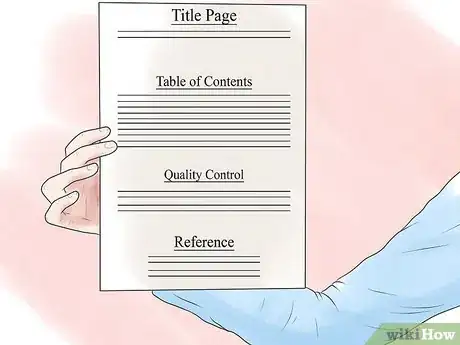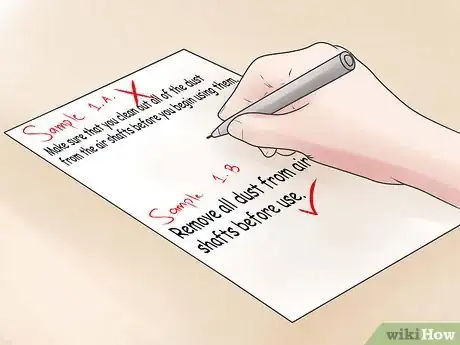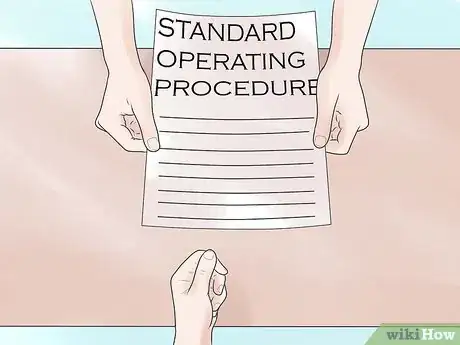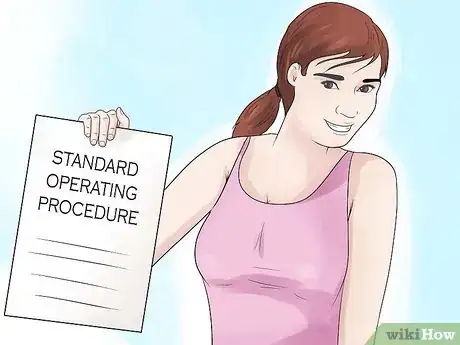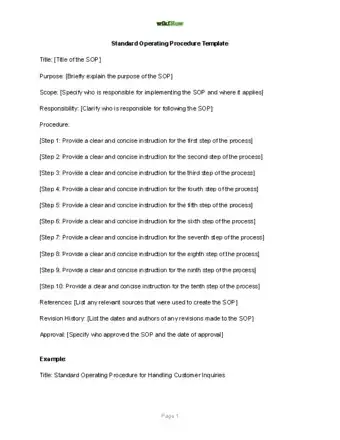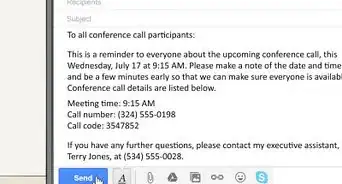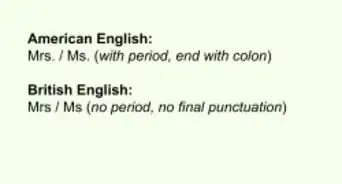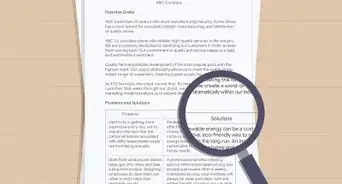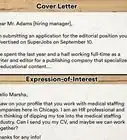This article was co-authored by Dave Labowitz. Dave Labowitz is a Business Coach who helps pre-entrepreneurs, solopreneurs/entrepreneurs, and team leaders start, scale, and lead their businesses and teams. Before beginning his coaching career, Dave was a startup executive who spent over a decade building high-growth companies. Dave’s “path less traveled” life includes adventures such as dropping out of high school, co-authoring a book in the Smithsonian Institute, and getting his MBA at Pepperdine’s Graziadio Business School.
There are 10 references cited in this article, which can be found at the bottom of the page.
wikiHow marks an article as reader-approved once it receives enough positive feedback. This article received 76 testimonials and 100% of readers who voted found it helpful, earning it our reader-approved status.
This article has been viewed 1,573,449 times.
A Standard Operating Procedure (SOP) is a document consisting of step-by-step information on how to execute a task. An existing SOP may need to just be modified and updated, or you may be in a scenario where you have to write one from scratch. It sounds daunting, but it's really just a checklist.[1] See Step 1 to get the ball rolling.
Steps
Formatting Your SOP
-
1Choose your format. There is no right or wrong way to write an SOP. However, your company probably has a number of SOPs you can refer to for formatting guidelines, outlining how they prefer it done. If that's the case, use the pre-existing SOPs as a template. If not, you have a few options:
- A simple steps format. This is for routine procedures that are short, have few possible outcomes, and are fair to the point. Apart from the necessary documentation and safety guidelines, it's really just a bullet list of simple sentences telling the reader what to do.
- A hierarchical steps format. This is usually for long procedures -- ones with more than ten steps, involving a few decisions to make, clarification and terminology. This is usually a list of main steps all with substeps in a very particular order.[2]
- A flowchart format. If the procedure is more like a map with an almost infinite number of possible outcomes, a flowchart may be your best bet. This is the format you should opt for when results aren't always predictable.[3]
-
2Consider your audience. There are three main factors to take into account before writing your SOP:
- Your audience's prior knowledge. Are they familiar with your organization and its procedures? Do they know the terminology? Your language needs to match the knowledge and investment of the reader.[4]
- Your audience's language abilities. Is there any chance people who don't speak your language will be "reading" your SOP? If this is an issue, it's a good idea to include lots of annotated pictures and diagrams.
- The size of your audience. If multiple people at once are reading your SOP (those in different roles), you should format the document more like a conversation in a play: user 1 completes an action, followed by user 2, and so on and so forth. That way, each reader can see how he or she is an integral cog in the well-oiled machine.
Advertisement -
3Consider your knowledge. What it boils down to is this: Are you the best person to be writing this? Do you know what the process entails? How it could go wrong? How to make it safe? If not, you may be better off handing it over to someone else. A poorly-written -- or, what's more, inaccurate -- SOP will not only reduce productivity and lead to organizational failures, but it can also be unsafe and have adverse impacts on anything from your team to the environment. In short, it's not a risk you should take.
- If this is a project you've been assigned that you feel compelled (or obligated) to complete, don't shy away from asking those who complete the procedure on a daily basis for help. Conducting interviews is a normal part of any SOP-creating process.
-
4Decide between a short or long-form SOP. If you're writing or updating an SOP for a group of individuals that are familiar with protocol, terminology, etc., and just would benefit from a short and snappy SOP that's more like a checklist, you could just write it in short-form.
- Apart from basic purpose and relevant information (date, author, ID#, etc.), it's really just a short list of steps. When no details or clarification are needed, this is the way to go.
-
5Keep your SOP purpose in mind. What's obvious is that you have a procedure within your organization that keeps on getting repeated over and over and over. But is there a specific reason why this SOP is particularly useful? Does it need to stress safety? Compliance measures? Is it used for training or on a day-to-day basis?[5] Here are a few reasons why your SOP is necessary to the success of your team:
- To ensure compliance standards are met
- To maximize production requirements
- To ensure the procedure has no adverse impact on environment
- To ensure safety
- To ensure everything goes according to schedule
- To prevent failures in manufacturing
- To be used as training document
- If you know what your SOP should emphasize, it'll be easier to structure your writing around those points. It's also easier to see just how important your SOP is.
Writing Your SOP
-
1Cover the necessary material. In general, technical SOPs will consist of four elements apart from the procedure itself:[6]
- Title page. This includes 1) the title of the procedure, 2) an SOP identification number, 3) date of issue or revision, 4) the name of the agency/division/branch the SOP applies to, and 5) the signatures of those who prepared and approved of the SOP. This can be formatted however you like, as long as the information is clear.
- Table of Contents. This is only necessary if your SOP is quite long, allowing for ease of reference. A simple standard outline is what you'd find here.
- Quality Assurance/Quality Control. A procedure is not a good procedure if it cannot be checked. Have the necessary materials and details provided so the reader can make sure they've obtained the desired results. This may or may not include other documents, like performance evaluation samples.
-
Reference. Be sure to list all cited or significant references. If you reference other SOPs, be sure to attach the necessary information in the appendix.
- Your organization may have different protocol than this. If there are already preexisting SOPs you can refer to, abandon this structure and adhere to what's already in place.
-
2For the procedure itself, make sure you cover the following:
- Scope and applicability. In other words, describe the purpose of the process, its limits, and how it's used. Include standards, regulatory requirements, roles and responsibilities, and inputs and outputs.
- Methodology and procedures. The meat of the issue -- list all the steps with necessary details, including what equipment needed. Cover sequential procedures and decision factors. Address the "what ifs" and the possible interferences or safety considerations.
- Clarification of terminology. Identify acronyms, abbreviations, and all phrases that aren't in common parlance.
- Health and safety warnings. To be listed in its own section and alongside the steps where it is an issue. Do not gloss over this section.
- Equipment and supplies. Complete list of what is needed and when, where to find equipment, standards of equipment, etc.
-
Cautions and interferences. Basically, a troubleshooting section. Cover what could go wrong, what to look out for, and what may interfere with the final, ideal product.
- Give each of these topics their own section (usually denoted by numbers or letters) to keep your SOP from being wordy and confusing and to allow for easy reference.
- This is by no means an exhaustive list; this is just the tip of the procedural iceberg. Your organization may specify other aspects that require attention.
-
3Make your writing concise and easy to read. Odds are your audience isn't choosing to read this for fun. You want to keep it short and clear -- otherwise their attention will stray or they'll find the document formidable and hard to grasp. In general, keep your sentences as short as possible.
- Here's a bad example: Make sure that you clean out all of the dust from the air shafts before you begin using them.
- Here's a good example: Vacuum all dust from air shafts before use.
- In general, don't use "you." It should be implied. Speak in the active voice and start your sentences with command verbs.
-
4If necessary, interview the personnel involved in the process on how they execute the task. The last thing you want to do is write an SOP that is just plain inaccurate. You're compromising the safety of your team, their efficacy, their time, and you're taking an established process and not paying it any mind -- something your teammates may find a little offensive. If you need to, ask questions! You want to get this right.[7]
- Of course, if you don't know, ask multiple sources, covering all roles and responsibilities. One team member may not follow standard operating procedure or another may only be involved in a portion of the deed.
-
5Break up large chunks of text with diagrams and flowcharts. If you have a step or two that are particularly intimidating, make it easy on your readers with some sort of chart or diagram. It makes it easier to read and gives the mind a brief hiatus from trying to make sense of it all. And it'll be appear more complete and well-written for you.
- Don't include these just to bulk up your SOP; only do this if necessary or if trying to bridge a language gap.
-
6Make sure each page has control document notation. Your SOP is probably one of many SOPS -- because of this, hopefully your organization has some type of larger database cataloging everything within a certain reference system. Your SOP is part of this reference system, and therefore needs some type of code in order to be found. That's where the notation comes in.
- Each page should have a short title or ID #, a revision number, date, and "page # of #" in the upper right hand corner (for most formats). You may or may not need a footnote (or have these in the footnote), depending on your organization's preferences.[8]
Ensuring Success and Accuracy
-
1Test the procedure. If you don't want to test your procedure, you probably haven't written it well enough. Have someone with a limited knowledge of the process (or a person representative of the normal reader) use your SOP to guide them. What issues did they run across? If any, address them and make the necessary improvements.[9]
- It's best to have a handful of people test your SOP. Different individuals will have different issues, allowing for a wide variety of (hopefully useful) responses
- Be sure to test the procedure on someone who's never done it before. Anyone with prior knowledge will be relying on their knowledge to get them through and not your work, thus defeating the purpose.
-
2Have the SOP reviewed by those who actually do the procedure. At the end of the day, it doesn't really matter what your bosses think of the SOP. It's those who actually do the work that it matters to. So before you submit your work to the higher ups, show your stuff to those that'll be doing (or that do) the job. What do they think?
- Allowing them to get involved and feel like they're part of the process will make them more likely to accept this SOP you're working on. And they'll inevitably have some great ideas!
-
3Have the SOP reviewed by your advisors and the Quality Assurance team. Once the team gives you the go ahead, send it to your advisors. They'll probably have less input on the actual content itself, but they'll let you know if it meets formatting requirements, if there's anything you missed, and the protocol for making it all official and input into the system.
- Route the SOP for approvals using document management systems to ensure audit trails of the approvals. This will vary from organization to organization. Basically, you want everything to meet guidelines and regulations.
- Signatures will be necessary and most organizations nowadays have no problem accepting electronic signatures.
-
4Once approved, start implementing your SOP. This may involve executing a formal training for the affect personnel (e.g. classroom training, computer-based training, etc.) or it may mean your paper is hung up in the bathroom. Whatever it is, get your work out there! You worked for it. Time for recognition!
- Be sure your SOP remains current. If it ever gets outdated, update it, get the updates re-approved and documented, and redistribute the SOP as necessary. Your team's safety, productivity, and success matter on it.[10]
Standard Operating Procedure Template
Community Q&A
-
QuestionWhere should I write the procedure number?
 Community AnswerThis is part of the SOP format, and can be found at the top of the SOP pages as a header.
Community AnswerThis is part of the SOP format, and can be found at the top of the SOP pages as a header. -
QuestionHow do I make a standard operating procedure for my facility?
 Community AnswerThink of all the tasks you complete in your facility and write them out step by step.
Community AnswerThink of all the tasks you complete in your facility and write them out step by step. -
QuestionHow do I write a procedure for deadlines?
 Community AnswerWhen writing the objective for the project, include the time frame for completion as part of the project time line. For example, if you are submitting a contract to complete a provider's audit, you would state, "Four patient's audits completed in one-week time frame." If you are contracting with another party, the contract would state, "Agreement of four audits to be completed by [the date]."
Community AnswerWhen writing the objective for the project, include the time frame for completion as part of the project time line. For example, if you are submitting a contract to complete a provider's audit, you would state, "Four patient's audits completed in one-week time frame." If you are contracting with another party, the contract would state, "Agreement of four audits to be completed by [the date]."
References
- ↑ https://www.merriam-webster.com/dictionary/standard%20operating%20procedure
- ↑ http://www.milkproduction.com/Library/Scientific-articles/Management/Designing-standard-operating/
- ↑ https://extension.psu.edu/standard-operating-procedures-a-writing-guide
- ↑ https://www.bizmanualz.com/save-time-writing-procedures/what-are-policies-and-procedures-sop.html
- ↑ https://extension.psu.edu/standard-operating-procedures-a-writing-guide
- ↑ https://smu.ca/webfiles/SOPGuidanceDocument.pdf
- ↑ https://www.process.st/writing-standard-operating-procedures/
- ↑ https://www.process.st/writing-standard-operating-procedures/
- ↑ https://www.process.st/writing-standard-operating-procedures/
- ↑ https://www.collaboris.com/standard-operating-procedures-a-complete-guide-review-update/
- Use flowcharts and pictorial representations so that the reader is clear about the process.
- Remember to involve the stakeholders whenever possible, so that the documented process is the actual process.
About This Article
To write a Standard Operating Procedure, or SOP, start by describing the purpose of the process, its limits, and how it is used. Next, cover the methodology for completing the process, including any equipment which is needed. Clarify any abbreviations, acronyms, or uncommon terms. Clearly list any health and safety warnings, both alongside the relevant steps and again in its own section. Include a section that covers anything that could go wrong and how to fix it, and finish with a quality control section and any references used. For information about getting your SOP reviewed by workers and Quality Assurance, continue reading!





